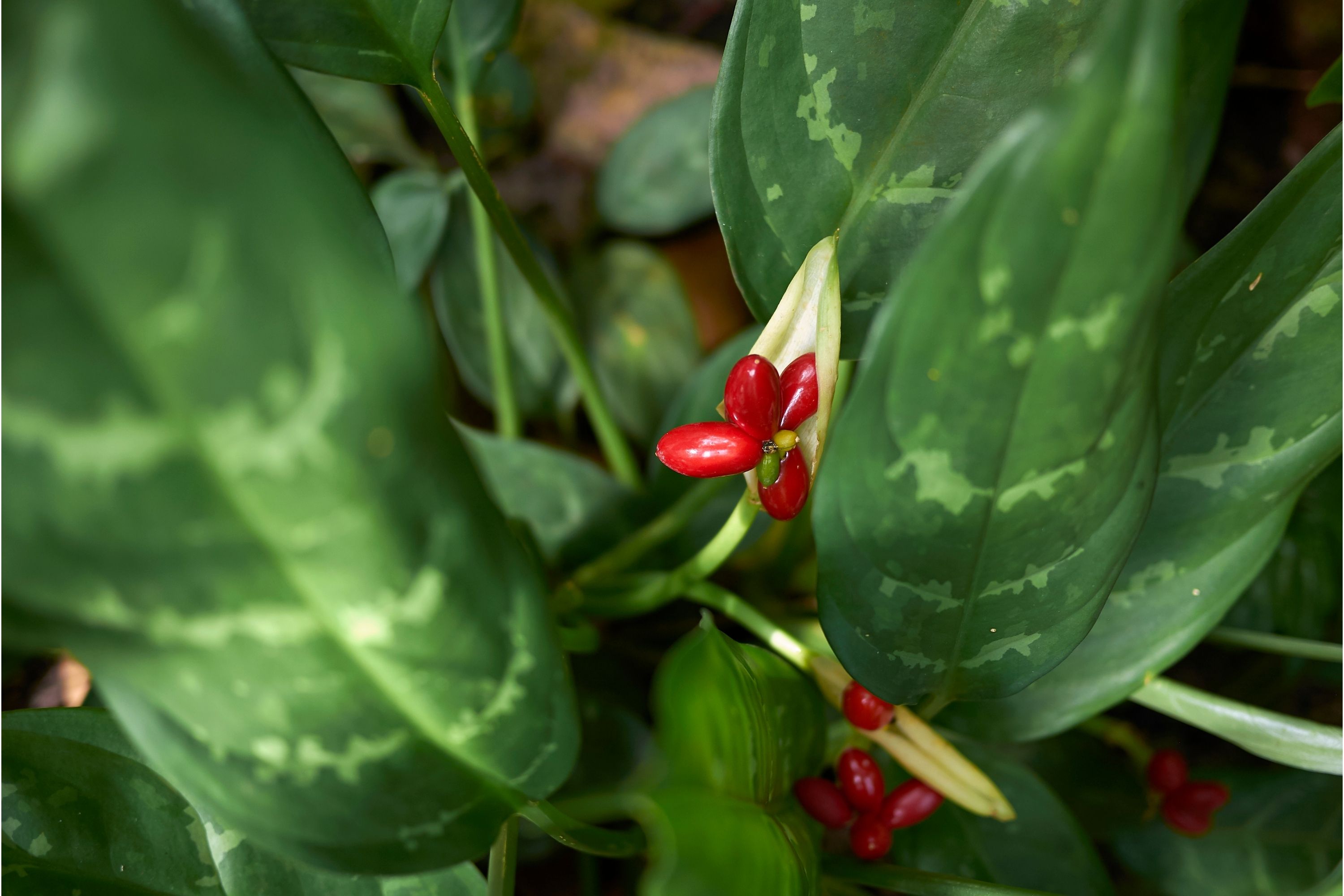Burmese Evergreen
(Aglaonema nitidum)

Description
Aglaonema nitidum (Synonyms: Calla nitida) is a species of Liliopsida first described by William Jack, and given its simplified Asian name by Carl Sigismund Kunth. Aglaonema nitidum belongs to the genus Aglaonema, and the family Araceae. Aglaonema is a genus of flowering plants in the arum family, Araceae. They are native to tropical and subtropical regions of Asia and New Guinea.They are known commonly as Chinese evergreens. The synonym Drynaria lends its name to a certain type of prothallial germination, the 'Drynaria type', observed in several other ferns. In this type, the spores germinate into a germ filament composed of barrel-shaped chlorophyllous cells with one or more rhizoids at the base cell. The tipmost cell divides repeatedly by cross-walls, forming a broad spatulate (spoon-shaped) prothallial plate. One of the cells at the top margin of the prothallus then divides obliquely when it has 5, 10, or more cells across its width. This results in an obconical meristematic cell. Division by this type of cell is parallel to each other and perpendicular to the rest of the cells, forming rows. This eventually results in the formation of a notch at the anterior edge of the prothallus, giving it a roughly heart-shaped appearance (cordate). The cordate prothallus are usually smaller with thinner midribs than that of other members of Polypodiaceae. They are also usually more sparsely haired, with some prothalli rarely having multicellular hair. They mature after six to nine months, and finish their life cycle at around a year. The gametophytes produce male (antheridium), and female (archegonium) gametes. The gametes fuse, forming the diploid sporophyte, the 'fern' part of the life cycle. These are evergreen perennials with stems growing erect or decumbent and creeping. Stems that grow along the ground may root at the nodes. There is generally a crown of wide leaf blades which in wild species are often variegated with silver and green coloration. The inflorescence bears unisexual flowers in a spadix, with a short zone of female flowers near the base and a wider zone of male flowers nearer the tip. The fruit is a fleshy berry that ripens red. The fruit is a thin layer covering one large seed. Plants of the genus are native to humid, shady tropical forest habitat. Aglaonema have been grown as luck-bringing ornamental plants in Asia for centuries. They were introduced to the West in 1885, when they were first brought to the Royal Botanic Gardens, Kew.
Taxonomic tree:







